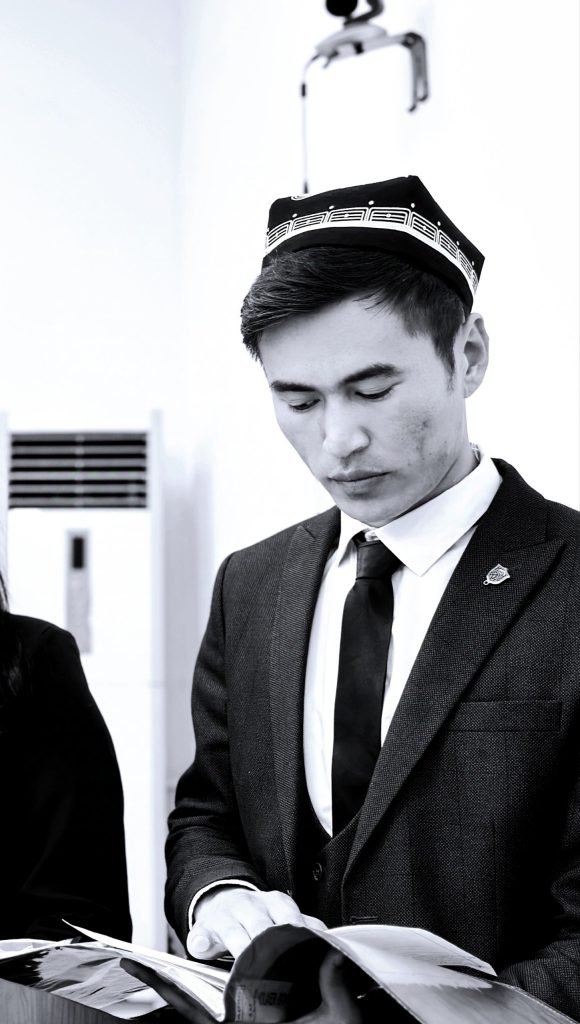THE ROLE OF THE WORD IN THE CONSTITUTION OF THE REPUBLIC OF UZBEKISTAN
Qulliyeva Feruza Qosimovna
Student of Termez State University
The first period of reform was marked by the adoption of the Constitution of the Republic of Uzbekistan, the main body after Uzbekistan achieved its independence. The Constitution is not only a legal document, but also the main foundation of society and its main weapon in the official Square. It should not be viewed only as a set of laws, since the Constitution is a bold step directly related to the life of every citizen, in the way of progressing the country and managing it with Justice. In the Explanatory Dictionary of the Uzbek language “Constitution Latin constitutio-designation, decision, appointment, legalization. The Basic Law of the state, which has a high legal force, is the basis of all current laws,” explained.
As we read the Constitution, we can come across many foreign intrusive words.
The use of these words is not just a coincidence. A legal document requires, first of all, to show accuracy, to be simple and equally understandable to all. In this sense, the words of appropriation contribute to the representation of terminological accuracy in the Constitution, as well as the enrichment of the lexical layer of the Uzbek language. We read the Constitution, we can come across many foreign intrusive words. The use of these words is not just a coincidence. A legal document requires, first of all, to show accuracy, to be simple and equally understandable to all. In this sense, the words of appropriation contribute to the representation of terminological accuracy in the Constitution, as well as the enrichment of the lexical layer of the Uzbek language. The use of borrowed words ensures that the law complies with international standards and accurately and clearly conveys its legal content.
We can divide words of assimilation into two parts according to their use in our language:
Active mastering-words that are actively used today, the content of which is understandable to all, have become the main terms of the legal language.
For example: democracy – (Greek “demos “ – people,” kratos “ – power) the freedom and equality of citizens is enshrined in the Constitution and laws, the forms of people’s power are established in practice and a specific political system; people’s power; Republic – (Latin for” common work“,” people’s work”) the form of government in which the Supreme state power belongs to the Authority (President or parliament); President – (Latin “prae” – ahead, “sedere” – to sit, to lead) a form of government in which the Supreme state power belongs to a body of power (President or parliament)elected for a certain period; a state with such a form of Government; article – (Arabic “subject”, “basis”) an independent branch of official document, complex, law and the like, separated by a number or letter; Parliament – (Latin “parlare” – to talk, talk) a higher representative and legislative body, which is drawn up in
Inactive introspections are words that are little used in everyday speech, difficult to understand, characteristic mainly of formal-legal texts.
For example: ratification – (Latin “ratificatio “ – approval, approval) approval of an international treaty or convention by a body of Supreme state power, to be legally enforced in the same countries; monopoly – (Greek” monos-singular, “poleo” – sell)
an enterprise or association that is the sole owner of the production and sale of a product or service; a state of secluded dominance in the market; a speaker – (English “speaker“) is the chairman of Parliament or chairman of the chamber in the parliaments of a number of countries (including Uzbekistan); a denunciation – (French” denocer” – declare, inform) that a state.
These words, which are found in the Constitution, are not the sum of phrasal terms. These words, recognized and actively used in the international arena during today’s globalization, have had time to become a mirror that shows the political level of each country. These words, which are found in the Constitution, are not the sum of phrasal terms. These words, recognized and actively used in the international arena during today’s globalization, have had time to become a mirror that shows the political level of each country. We cannot deny foreign inflected terms, because certain acquisition terms are so complete with their legal content that its complete replacement with a national language alternative can lead to a transformation of the content and purpose being expressed and misunderstandings.
For this reason, the application of the words of appropriation in our Constitution is determined by the need to accurately and clearly reflect deeply thought out and legal concepts.
In conclusion, the place and level of appropriation words used in the Constitution are very important. While active appropriations have been absorbed into the life of society, serving to increase the legal literacy of the population, while at the same time enriching the language layer, inactive appropriation words are an integral, unified and necessary part of legal text and speech, through which they ensure the accuracy and consistency of the content in the laws of the Constitution.




